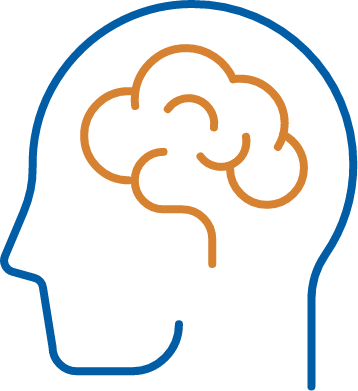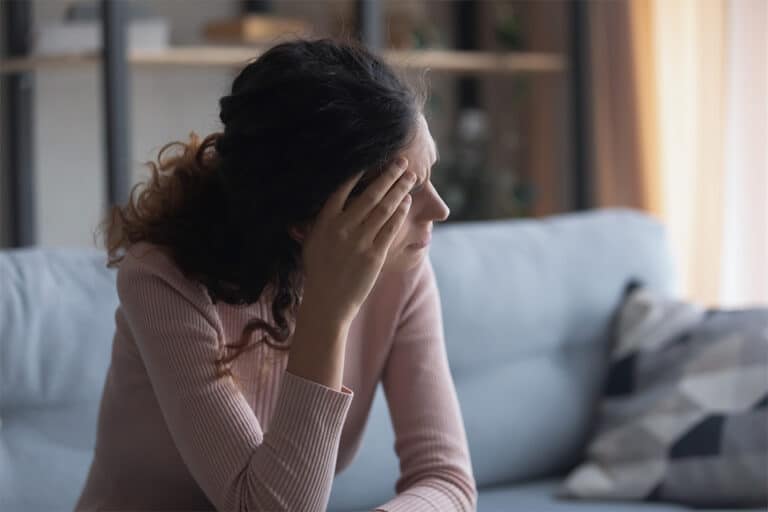One of the most significant hurdles preventing the treatment of many substance use disorders is withdrawal. Many people who have never had a substance abuse problem don’t understand that “quitting cold turkey” isn’t a viable option. Aside from feeling awful, withdrawal can cause many other issues, making it nearly impossible for a person to function. Recovering from a substance use disorder takes time, commitment, and, most importantly, support.
In this article, we break down the pitfalls of opioid withdrawal in hopes that you can better understand what those with addictions are going through. While Community Medical Services can help them with rehabilitation, it’s important to remember that the best thing you can do for loved ones suffering from substance abuse is to be there for them.
What is Withdrawal?
When a person uses any substance – such as alcohol, drugs, or even some prescription medications – over a long period, the brain adapts to the presence of the substance. This process is called “neuroadaptation.” Once these brain changes have occurred, people may not feel normal unless they have the substance in their system.
They may experience uncomfortable or dangerous symptoms when the substance is taken away. The exact symptoms vary depending on the substance involved.

Opioid Withdrawal
When a person uses an opioid daily over a long period, their brain adapts to the presence of the opioid. It doesn’t matter which opioid is used (medications such as hydrocodone, oxycodone, morphine, codeine, or heroin or fentanyl from the streets). When people run out of opioids, they may experience withdrawal symptoms.
The symptoms of opioid withdrawal are severe and intense – it is difficult for someone who has not experienced opioid withdrawal to understand how uncomfortable it can be. People describe opioid withdrawal as “the worst I have ever felt in my whole life.” Sometimes they use words like “horrible” or “terrible.” These symptoms are so awful that they can drive people to do things they would typically never do justto make them disappear.
What are the Symptoms of Opioid Withdrawal?
There are many possible symptoms of opioid withdrawal, but the most common are:
- Severe fatigue
- Hot/cold flashes and sweating
- Nausea, vomiting, and diarrhea
- Muscle and joint aches all over, with a worsening intensity of chronic pain issues.
- Runny nose, sneezing, and watery eyes
- Insomnia
- A severe sense of restlessness
It’s the restlessness that most people describe as the worst part – they just don’t feel comfortable in their skin. They are exhausted but can’t sit still and can’t sleep.
While these symptoms are rarely considered medically dangerous (with some exceptions in severe cases if standard medical treatment is unavailable), they are bad enough to prevent many people from successfully stopping opioids. It is not enough to “just say no” or “just quit” – for many, it is not humanly possible to stop opioids without help.
How Long Do Opioid Withdrawal Symptoms Last?
If a person has been using short-acting opioids such as oxycodone, heroin, or fentanyl, opioid withdrawal symptoms usually start within 12-24 hours of the last dose. These symptoms continue to worsen, usually peaking at 2-3 days. By day 5-7, most people are starting to feel somewhat better but still don’t feel normal. Once the “acute” phase of opioid withdrawal is over (about one week), people enter the “chronic” phase of withdrawal.
During the chronic phase, people may experience fatigue, depression, insomnia, and unease. These symptoms can persist for months. The long-term withdrawal symptoms are one reason it is so hard for many people to stay off opioids – even after they make it through the acute phase, the chronic symptoms may wear down their resolve over time.
A single dose of an opioid is enough to make the chronic symptoms go away, at least for a while, but then the patient is back on the road toward a full-blown addiction.
How Can You Make Opioid Withdrawal Symptoms Go Away?
The only effective method of making opioid withdrawal symptoms go away is to give someone an opioid. By giving a long-acting opioid, you can relieve withdrawal symptoms without making someone drowsy or “high.” Once someone has become physically dependent on opioids through long-term use, they need some opioids to feel normal.
Some medications can take the edge off of opioid withdrawal symptoms (such as clonidine, ibuprofen, ondansetron, or others), but they are only mildly effective. If someone is trying to stop opioids “cold turkey,” these medications can help a little, but they will probably still feel miserable.
How is Opioid Addiction Treated?
The best method for people with an addiction to opioids is for them to regularly take an FDA-approved medication such as methadone or buprenorphine so that they don’t have withdrawal symptoms and feel normal. These medications do not have any long-term medical toxicity. Since they make people feel normal, do not make people feel “high,” and allow people to carry on all their usual activities, there is no urgency to stop them.
Once patients are ready to seek health care for their opioid addiction, getting on medication is the first step. This can be followed by a slow taper as the best approach to stopping opioids entirely. Some people, however, may need to stay on methadone or buprenorphine for years, or even their entire life – but since the medications have no adverse effects in the short or long term, staying on them may be the best option for many people.
Everyone is different, and the best way to address their opioid addiction must be individualized. A patient working with their counselor and medical provider is the best method to know what will work for them.
Seek Help for Opioid Addiction from Community Medical Services
We know opioid addiction is difficult to get away from. We also know the pain that living with addiction can cause. If you or someone you know is ready to take their life back, Community Medical Services is here to help.

We operate more than 60 clinics across eleven states and have over 30 years of experience helping individuals fight their opioid addiction and get back to living their best life.
You are never in this alone. We’re only ever a call or click away. Contact Community Medical Services today, and let’s move past your opioid addiction together.
Ready For A Change? Here’s How To Start
At Community Medical Services, we want to help you reclaim your life. For more information on your opioid use disorder medication options, find a nearby clinic or call us today at 855-203-6352.












